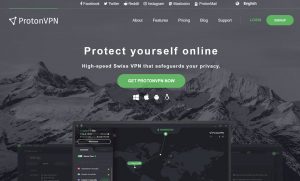ONLINE ID THEFT
Back in the day, your wallet or purse being stolen was the biggest fret to your economic standing. Yes, the economy could crash and many other rare things could have happened, but someone getting your cards and cash was a terrifying idea. Times have however changed, and the digital age has taken over all aspects of our lives. Technology and the internet have opened doors to digital shopping, banking, trading, investing, and entertainment. But, as millions of Americans a year find out, that door opens both ways.

What is Online Identity Theft?
Identity theft used to happen in the real world when someone gained access to your social security number and used it to open bank accounts, make purchases, and claim a tax refund. Online identity is slightly different. Having your identity stolen online happens when a fraudster steals your identity by accessing your PIIs or Personal Identifiable Information to commit fraud. Your PII can include your:
- Driver’s License Number
- Social Security Number
- Bank Account Numbers
- Passwords for websites with your registered cards.
- Any sensitive information that can be used to identify you
When they gain access to this information they can commit crimes, take credit cards, open bank accounts, file tax returns in your name. Needless to say, if you don’t know how it happens and doesn’t follow your accounts close enough, identify theft can nearly destroy your finances and your credit score.
How Does it Happen?
Whether on social media, online stores, or online finance management sites, we regularly trust our personal information to our phones and computers. Through the use of high-tech and more classic tactics, fraudsters gain access to the information you shared online. There are few methods which are used most commonly:

- Malicious Software: This is the method that requires the thieves to trick you into downloading malicious malware. The malware is used to attack your computer to try to find your PII.
- Phishing: In this method, cybercriminals send countless emails, pretending to be a financial institution or a trusted business or organization. Through attachments and/or links, criminals attempt to steal or ask you to provide your PII.
- Unsecure Websites: Do not enter your information to websites or apps that are not secure. Avoid any website with the “http:” prefix. Only use “https”
- Pharming: Method that requires hackers to use a virus to hijack or take control of your browser. Taking you to fake websites to get you to enter your PIIs.
- Weak Passwords: Online financial websites or reputable online shops have a very high level of security, while most other websites store less important information and do not require the same levels of security. This is why it is vital to never use the same password for your social and financial accounts online. Hackers gain your password from your social accounts and if it’s the same as your financial sites they gain complete access.
- Accessing Discarded Computers and Phones: Unless you did not properly wipe your phone or computer before discarding it, cybercriminals can attempt to access that information from those devices.
Online identity theft can result in major losses and will require a lot of work to recover from. You will have to prove that you did not make any of the transactions and about a million other things to move along on the path to recovering your money and clearing your name. Use the correct protection for all your electronic devices, and make sure to use long, unique and difficult passwords for any and all accounts that contain any of your personal identifiable information.
How to stay safe
1. Secure Your Personal Information: Keep your personal documents in a secure place and be careful when discarding documents containing personal information. Shred documents before disposal.
2. Protect Your Social Security Number: Don’t carry your Social Security card in your wallet. Don’t give out your SSN unless absolutely necessary.
3. Be Careful with Your Trash: Discard sensitive documents properly, ideally by shredding them. Identity thieves often go through trash looking for personal information.
4. Protect Your Mail: Retrieve your mail promptly, and don’t leave it sitting in your mailbox. For outgoing mail, use secure, official post office collection boxes.
5. Be Smart Online: Use strong, unique passwords for your online accounts. Enable two-factor authentication wherever possible.
6. Install Security Software: Use antivirus and firewall software on your computers and keep them updated.
7. Monitor Your Accounts: Regularly check your bank and credit card accounts for any unusual activity.
8. Secure Your Mobile Devices: Use password protection on your phone and other devices. This can prevent unauthorized access if your device is lost or stolen.
9. Limit What You Carry: When you go out, take only the identification, credit, and debit cards you need.
10. Regularly Review Credit Reports: In the US, you’re entitled to one free credit report per year from each of the three major credit bureaus. You can stagger these requests so you receive one every four months, helping you to keep a close eye on any changes or suspicious activity.
11. Be Cautious of Scams and Phishing: Never give out personal information over the phone or via email unless you initiated the contact and you’re sure you know who you’re dealing with.

Identity Theft Prevention Services
Identity theft prevention services aim to mitigate the risks of identity theft by offering an array of tools and resources to protect individuals from becoming victims.
Key Features of Identity Theft Prevention Services
Monitoring
- Credit Monitoring: Regularly checks your credit reports for any suspicious activities such as new accounts opened in your name.
- Social Security Number Tracking: Monitors the dark web and other dubious platforms for unauthorized use of your Social Security Number.
- Public Record Monitoring: Scans public databases for changes related to your identity, such as address changes.
- Bank and Credit Card Activity Alerts: Notifies you of any unusual banking or credit card transactions.
Recovery Assistance
- Identity Restoration Services: In case your identity is compromised, professionals help you navigate the recovery process.
- Insurance: Many services offer identity theft insurance, which can cover expenses like legal fees, lost wages, and other costs related to identity theft recovery.
Alerts and Notifications
- Immediate Alerts: Instant notifications for any potential threats or suspicious activities linked to your personal data.
- Risk Management Reports: Periodic summaries or reports highlighting potential vulnerabilities and providing advice to safeguard your identity.
Protective Measures
- Safe Browsing Tools: Tools and software that protect against phishing sites, malware, and other online threats.
- Credit Freeze Assistance: Guidance on how to freeze your credit reports, preventing unauthorized parties from accessing them.
- Two-factor Authentication: Encourages or assists in the setup of two-factor authentication for online accounts.
How to Choose the Right Service
Comprehensive Monitoring
Opt for services that offer multi-dimensional monitoring, not just credit monitoring. Comprehensive surveillance that includes the dark web, public records, and bank transactions is more effective.
Restoration and Insurance
Ensure the service provides assistance in the unfortunate event of identity theft. The inclusion of insurance is an added advantage.
User Experience
The platform should be user-friendly, providing an intuitive dashboard, easy-to-understand alerts, and prompt customer support.
Pricing
Compare prices, and choose a service that offers a balance between cost and features. Some providers might offer basic protection for free, with premium features available at an additional cost.
Reviews and Reputation
Consider the feedback and reviews from other users. A company with a solid reputation is likely to offer more reliable protection.
Popular Identity Theft Prevention Services
- LifeLock: Offers a range of plans, from basic credit monitoring to more advanced services, including VPN for online privacy.
- IdentityForce: Provides comprehensive identity protection, including credit and dark web monitoring, instant alerts, and recovery services.
- Experian IdentityWorks: This service from the renowned credit bureau includes credit monitoring, fraud alerts, and identity theft insurance.



